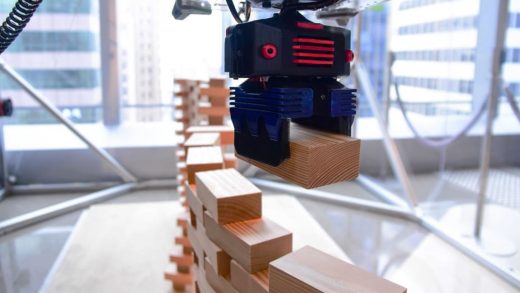Sports stadium aerial-camera technology is now being used to construct buildings
High above the field at the recent Super Bowl, a tiny robot was hanging in tension. Fixed on wires and capable of skyrocketing and nosediving in three dimensions, the robot is also a video camera called SkyCam, now a staple in sports broadcasting. A new iteration of this technology wants to become the staple of another industry, but instead of hauling a camera and capturing football kickoffs, this version will carry and stack bricks.
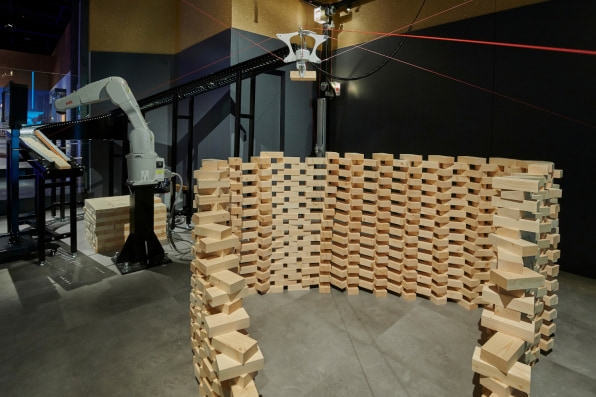
Developed by an interdisciplinary team of researchers at the Chinese University of Hong Kong, CU-Brick is a cable-driven robot capable of building precise and intricate structures, piece by piece. Demonstration projects show the robot whizzing through the air and cleanly stacking bricks along the base of a wall. Its creators see the technology as a potential game-changing innovation for the construction industry, increasing the speed, accuracy, and safety of construction projects.
Created by Darwin Lau from the department of mechanical and automation engineering and Adam Fingrut from the school of architecture, CU-Brick moves just like one of those stadium cameras, with four anchors at the corners of the building site and connecting cables running overhead. Linked with a 3D model of the project, the robot picks up a brick in one place and sets it down in another until the structure is complete.
“Cable robots may seem like something different, but if we think back one step, it’s just as if you can imagine multiple cranes put together,” says Lau.
They’ve been testing this idea at larger and larger scales, first with a 6.5-square-foot test runs in the lab, then scaled up to a temporary structure with 13 foot walls at the Hong Kong Science Museum. Soon, they’ll use the robot to build a permanent structure on the CUHK campus with walls more than 30 feet long.
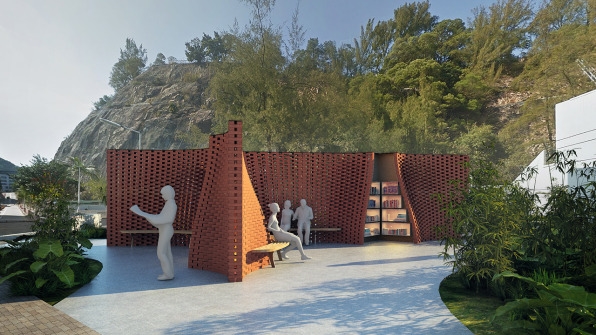
This larger project is set to be constructed in a few months. The structure is intended to be a kind of recycling collection site and upcycling pavilion, with built-in cabinets for students to drop off old batteries and donate or take reusable items, like books and electronics. The roughly plus-shaped pavilion will have wavy brick walls that flare out at certain points to create the storage space for the recycling receptacles. Benches will also be added manually.
The idea is that this design, while not impossible for a human to build, can be built more accurately by a computer-controlled robot. “It’s about illustrating what the potential is in design, and how we can get maximum variety,” Fingrut says. “That becomes a design opportunity.”
It also can make the process of building safer. Lau says the system could eventually be scaled up to carry heavier building materials, or even entire room-size modules, reducing or even eliminating the need for human workers to carry heavy loads. “We want it to be a safe site. That’s the goal. Safe but also to make sense economically,” Lau says.
Fingrut says it’s too soon to say whether CU-Brick will make the construction process go faster, as the demonstration project is more about showing the dexterity of the system. But both he and Lau expect that this kind of automation can make construction faster and cheaper. “The machines we’ve been working with are capable of working without a lunch break,” Fingrut says.
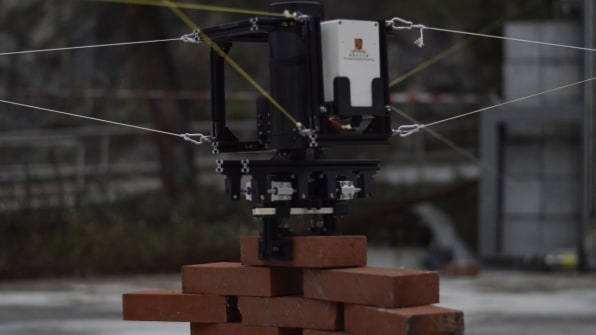
CU-Brick doesn’t completely automate the building process. For the upcycling pavilion project, the system will include one robot to scan and select bricks. Then, a human will apply the right amount of mortar based on the stage of construction, and CU-Brick will carry and place the brick directly in the location shown in the 3D model.
Robots are hardly new to the construction world. Automated technologies like multi-axis robotic arms have been used to explore pick-and-place construction, where an arm picks up individual building blocks and gradually stacks them into a structure, either from a fixed point or a moving base. Flying drones have even been suggested as potential labor assistants for this type of piecemeal construction. All of these options have their limitations, from how high they can build to how heavy the building materials can be. CU-Brick, Lau says, “can have a large space as well as a good payload to carry.”
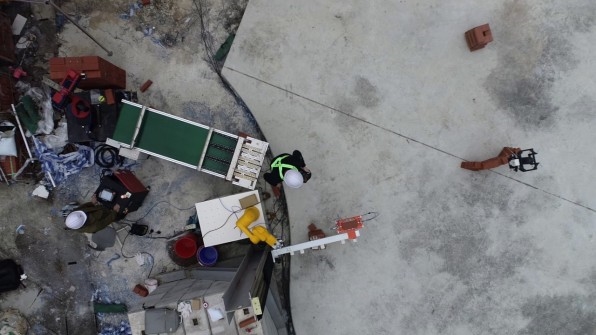
Fingrut says one of the other benefits of the CU-Brick system is its compact size, especially when existing structures can be used to create the four anchor points for the cables. “The whole system could be a laptop, and the rests fit inside a small suitcase or backpack,” he says. Compared to a robotic arm, which could require a tractor to move from one place to another on a building site, CU-Brick is a versatile alternative.
It’s also a way to solve a labor issue plaguing the global construction industry. For repetitive, manual jobs like bricklaying, robots offer a viable solution.
“It’s not a matter of robots replacing human workers, it’s that there are no human workers who want to do this job,” says Lau.
Fast Company , Read Full Story
(47)

